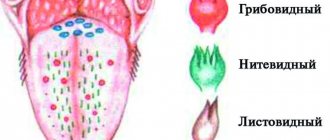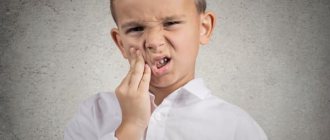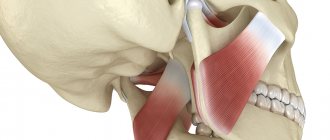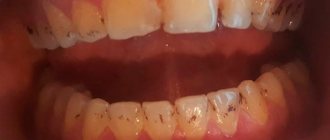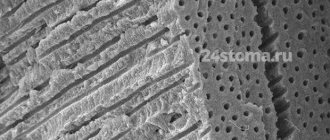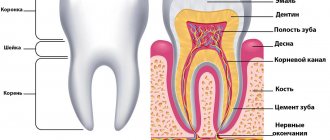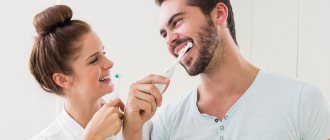Daily dental and oral care is an important part of dental health. How to properly brush teeth for adults and children, what additional hygiene products do dentists recommend using? We will talk about this in the article.
In this article
- How long should you brush your teeth?
- What brush should I use?
- Which pasta should you choose?
- We brush our teeth correctly with a regular brush
- How to brush your teeth with an electric toothbrush?
- The most common mistakes when brushing your teeth
Regular and proper brushing helps remove more than 60% of plaque and protect gum health. At the same time, dentists note that many people do not properly care for their oral cavity, which increases the risk of developing caries, periodontitis and other dental diseases. It is important not only to brush your teeth twice a day, but also to do it according to all the rules.
How long should you brush your teeth?
According to the recommendations of dentists, you need to brush your teeth for at least two minutes, evenly distributing this time between the four quadrants of the oral cavity. 30 seconds - for each half of the lower and upper jaw. If you use a regular brush, an hourglass or a timer on your mobile phone will help you control the brushing time. Users of electric brushes benefit from a built-in timer that emits a short vibration or musical signal every 30 seconds and a long signal every two minutes from the start of the procedure.
With a cleaning duration of two minutes, you can thoroughly remove plaque, food debris and other contaminants. But the experience of doctors shows that many people strive to complete the cleansing faster. As a result, unremoved plaque remains on the surface of the enamel, which contributes to the proliferation of microbes, the development of caries and gum pathologies.
If you want to avoid such problems, you should not shorten the time of the hygiene procedure - you need to brush your teeth for at least two minutes.
Arouse interest
What to do when your baby flatly refuses to brush his teeth? It is more productive not to force children, but to interest them.
Parents' allies will be kindness, patience and perseverance: according to psychologists, it takes several months to develop a habit.
Give your child the right to choose any brush from the range suitable for his age. Superheroes and princesses, fairy-tale animals and characters from animated series - the choice is widest.
Kids love to imitate adults. Show your child an example and tell him why you need to keep your teeth in order. Involve older children in the competition to see who can cope better with the cleansing procedure.
It is useful to attend a special lesson with a pediatric dentist on hygiene issues.
The short video develops the idea that game-based learning is especially effective. Organizing a family clean teeth celebration is a good idea that can be borrowed from the video.
A special monthly wall calendar will remind your child of the need to maintain hygiene. For each date, there are two pictures that indicate morning and evening procedures. Having completed the hygienic operation, the baby paints over one image after another until the calendar runs out. When regular cleaning becomes a habit, the calendar can be considered to have served its purpose.
If there is a persistent reluctance to carry out hygiene procedures, educational and educational cartoons will help. The funny rabbit-dentist, the hero of the video, invites children on an exciting journey through different countries.
What brush should I use?
Both regular and electric toothbrushes are suitable for brushing your teeth. The first ones are notable for their low price, are available to absolutely everyone, and are suitable for children under three years of age. Electric ones have a more intense effect on impurities in the oral cavity, remove more plaque, and clean the interdental spaces better, but they are not recommended for use in children under three years of age and for certain diseases.
When choosing any brush - regular or electric - you need to take into account the age, condition of the teeth and gums. Children choose brushes with ultra-soft short bristles with rounded tips that will not scratch children's thin enamel and injure delicate gums. Adults with sensitive teeth are advised to choose a brush with soft bristles. For those who have healthy teeth and gums and no heavy plaque, medium-hard bristles are suitable. To combat heavy plaque and tartar, choose hard and very hard brushes.
An important condition is that the bristles must be synthetic. It is gentler on the gums, dries faster, and bacteria accumulate in it much more slowly. It is good if the brush has a non-slip rubberized handle. Such models fit well in the hand and are easy to use, especially for children.
Any brush should be changed once a quarter. The usual one is replaced entirely; the electric one has removable attachments.
At one year old
When the child turned one year old, the family already had some experience in cleaning with a silicone nozzle. The number of teeth has also increased - usually there are 5-8.
It's time to buy your first toothbrush. There are certain requirements for it:
- small head;
- soft synthetic bristles, short and thin;
- a wide, short handle with a non-slip surface, preferably with a limiter;
- Made of soft rubber that does not injure gums.
Clean your teeth by moistening the brush with chilled boiled water. For babies whose age is about 1 year, the paste is not used. The frequency remains unchanged - twice a day, after breakfast and dinner.
Which pasta should you choose?
To brush your teeth, a toothbrush is not enough; you need to choose the right toothpaste. First, it prevents scratching of enamel and gum surfaces, softening the impact of stubble and increasing user comfort. Secondly, good pastes, due to special components and abrasives, soften and mechanically remove plaque, making it easier to remove with a brush. Thirdly, they contain substances that help strengthen enamel, prevent bleeding gums, and have a therapeutic effect on the oral cavity.
A paste with a strengthening effect should contain fluoride; people with sensitive gums are usually prescribed pastes with anti-inflammatory components. For those who do not have dental problems, hygienic pastes are suitable - they do not have a therapeutic effect, but only help remove plaque and deodorize the oral cavity to ensure fresh breath.
Properly brush your teeth with a toothbrush and a small amount of toothpaste. For adults, 1 cm is enough per cleaning, for children 4-6 years old - one pea, and for children 2-3 years old - an amount of paste the size of a grain of rice. Too much paste should not be used because an excess of active ingredients can harm the teeth. In particular, excess fluoride can lead to the development of a pathological condition such as fluorosis, in which dark spots and streaks appear on the teeth.
Professional oral hygiene in children
Professional hygiene is usually understood as a set of procedures, the purpose of which is to improve the health of the tissues and organs of the oral cavity and prevent the occurrence of dental ailments. This includes removing soft and hard plaque from teeth, closing fissures, that is, dental dimples, making them less vulnerable, as well as covering the dental surface with a special varnish. The dentist's office is not as treacherous as it looks at first glance. In addition to the preventive procedure, the doctor can conduct an oral hygiene lesson, select a toothpaste and brush for the child based on the individual characteristics of the oral cavity structure, and also give useful and competent care tips.
Finally, I would like to once again draw attention to the fact that caring for a child’s teeth requires special attention due to the subsequent formation of “lifelong” teeth. After all, as healthy as baby teeth are, the molars will be as strong!
We brush our teeth correctly with a regular brush
Follow the following algorithm:
- Position the brush head at a 45-degree angle to the surface of your teeth.
- Start brushing from the outer surface of the lower dentition, moving from the outer teeth to the central ones. Remove dirt and plaque using sweeping movements in the direction from the gums to the edge of the tooth. Once you've finished with the outer surface, use the same sweeping movements to clean the inside.
- Treat the teeth of the upper jaw in the same way.
- To clean chewing surfaces, position the brush so that it covers the entire chewing side of the tooth. Clean it with a back-and-forth motion, moving from one tooth to another. Perform the procedure alternately for the upper and lower jaws.
- Perform a gum massage. To do this, close your jaws and move the brush in a circular motion over the surface of your teeth and gums.
- Clean your tongue. Using the back, textured side of the brush or bristles, slowly move from the root to the tip of the tongue, removing plaque. Repeat at least four times. Similarly, the inner surface of the cheeks should be cleaned of plaque.
- Rinse your mouth.
- To remove food debris and better clean the interdental spaces, use dental floss. Wrap a small piece around your fingertips and swipe up and down several times. Be careful not to damage your gums.
- To better clean interdental spaces, gum pockets, and care for crowns or braces, use an irrigator.
How to brush your teeth with an electric toothbrush?
The pattern of brushing teeth with an electric toothbrush differs from brushing with a regular manual toothbrush. Electric brushes have a built-in motor, and sonic and ultrasonic models also have a high-frequency generator. They cause high-frequency pulsation of the bristles and movement of the cleaning head, due to which cleaning occurs.
The user does not need to apply pressure to the toothbrush, sweeping or circular motions, because the electric model handles these tasks on its own. To brush your teeth, you need to moisten the bristles, apply a little toothpaste to it, place the brush in your mouth, turn it on and simply move it without pressure or unnecessary movements from one tooth to another.
Please note that the cleaning technique may differ depending on the type of electric brush (rotary, sonic, ultrasonic). Therefore, the exact method of correct use should be read in the instructions for the specific model before first use.
At what age can you try to teach your child to brush their teeth on their own?
For your information! Gradually accustoming a child to independent oral hygiene should begin no earlier than one and a half years.
At this age, children often copy the behavior of adults, so it is easy to interest the baby with your own example.
However, parents should carefully monitor the baby's reaction.
If your first attempts at brushing your teeth on your own are accompanied by hysterics and screaming, it is better to postpone learning for a while.
It is highly undesirable to force your baby to brush his teeth..
Thus, it is possible to cause aversion to the procedure and fear of it.
The most common mistakes when brushing your teeth
- Skipping an evening cleanse.
Some people find it sufficient to brush their teeth once a day - in the morning when they go to work. It is not right. At night, little saliva is produced, so food debris is washed off the surface of the teeth, and bacteria actively multiply in them. They produce acids that destroy teeth and gases that cause unpleasant odors.
- Rare brush replacement.
Over time, the bristles wear out and cleaning becomes less effective. In addition, over time, even synthetic bristles accumulate germs, so it is important to change the brush or head every three months.
- Too much pressure.
Brushing your teeth with a regular brush requires moderate pressure, otherwise you can damage the enamel and gums. The electric brush requires virtually no pressure; it is only lightly pressed against the surface of the teeth.
Avoid these mistakes, then you can maintain oral health longer.
The dentist is not a scary beast!
When is the best time to meet with a dentist? On average, babies' first teeth begin to appear from 6 to 8 months, and by the age of one year their number can reach up to 6 teeth. This means it’s time to meet a doctor. The first meeting is very important, so try to find a specialist who knows how to find a common language with children, and then the good doctor will really become like that. In addition to checking the condition of the oral cavity and the health of existing teeth, the dentist will educate parents about what kind of nutrition will have a beneficial effect on tooth growth.
Evil caries
Your child's dental health can be at risk from tooth decay, even if he or she is only 2 years old. The cause may be poor nutrition, improper or absent oral care of the child. You shouldn’t sit back and wait for diseased baby teeth to fall out and healthy ones to grow in. Tooth decay can affect the condition of future molars. Review your baby's diet; perhaps he lacks calcium-rich foods. Monitor oral care, or even better, do it together with your baby. By doing this, you will not only teach him to brush his teeth, but also make this process enjoyable.
Forming the correct bite
According to research, breastfed children are less likely to subsequently encounter problems with malocclusion than bottle-fed children. What can mom do? Use slow flow nipples. The baby will have to strain his facial and jaw muscles, and this will help develop them and form the correct bite. Also, do not delay the introduction of solid foods and allow the baby to keep his hands in his mouth. And when your baby reaches 9 months, try weaning him off the pacifier.
